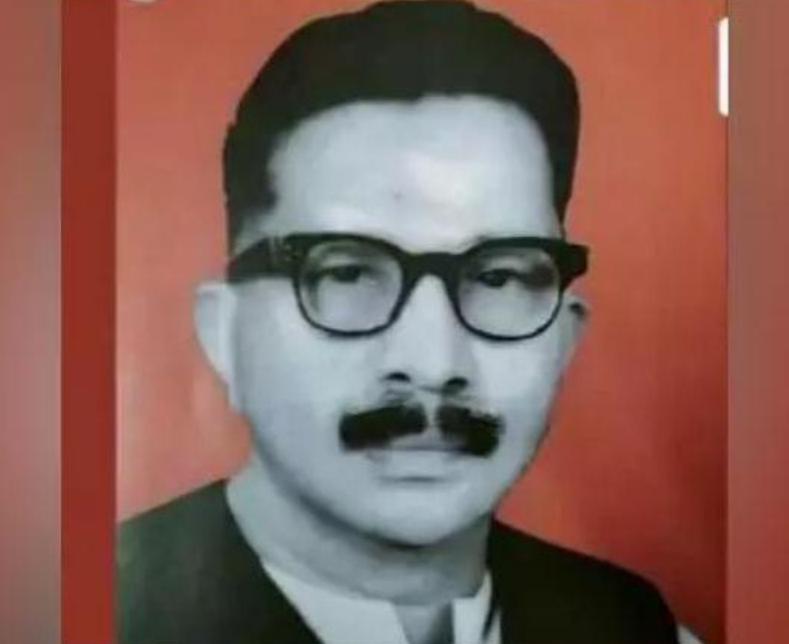Written by Shaju Philip
Report Source : Indian Express
k k nair, ram temple K K Nair is described by the faithful as the “man who began the Ram Janmabhoomi Hindu revival movement”.
The ICS officer whose favourite subject was mathematics, Nair had to go through a legal battle to be reinstated in the service after his suspension. Although he won the case, he quit the job as, by then, he had earned a degree in law.

Remembered as “Nair saab” in Ayodhya, Kerala-born Kadamkalathil Karunakaran Nair, defied the diktat of then Prime Minister Jawaharlal Nehru to remove the Ram Lalla idol, was suspended as a result, fought a legal battle against the decision, and won.
K K Nair is described by the faithful as the “man who began the Ram Janmabhoomi Hindu revival movement”. Nair, a native of Kuttanad in Kerala’s Alappuzha, was appointed the district magistrate of Faizabad in June, 1949, months before the idol was placed in the masjid. UP state governemnt led by Govind Ballabh Pant and later PM Nehru intervened in the issue asking Nair to remove the idol, but the intransigent ICS officer refused to follow the directives.
The ICS officer whose favourite subject was mathematics, Nair had to go through a legal battle to be reinstated in the service after his suspension. Although he won the case, he quit the job as, by then, he had earned a degree in law.
Nair then contested as a Jana Sangh candidate from Bahraich Lok Sabha constituency in Uttar Pradesh and became a member of the fourth Lok Sabha in 1967. Prior to that, Nair’s wife Shakuntala had contested as Jan Sangh candidate from Kaiserganj Lok Sabha in 1952 and won. She later became a member of the UP Assembly and a minister.
In Alappuzha, Nair’s nephew K K Padmanabha Pillai has fond memories of the family’s illustrious son. “For people of Ayodhya, he is still Nair saab.My son Sunil Pillai will attend the consecration ceremony as a special invitee,’’ said the 78-year-old Pillai, a chartered accountant.
Nair was one of the six children of Kandamkalathil Sankara Panicker, a farmer, and Parvathi Amma. Panicker was keen on educating his children – four boys and two girls. Born in 1907, Nair’s school days were spent in Alappuzha.
“My father Raghavan Pillai used to take Nair to school by rowing a country craft from Kainakari, where they lived. In fact, his name was Karunakaran Pillai. But at school, there was another student with that name. Hence, the teacher changed his name from Pillai to Nair. In our family, all others except him (Nair), have the family name Pillai,’’ said Pillai.
After his school education was over, Nair and his elder brother, Raghavan moved to Thiruvananthapuram, where their eldest brother Gopal Pillai was already in the judicial service. “Gopal wanted his brothers to continue studies. Nair obtained a degree honours with a gold medal. When Nair was 20, a marriage proposal came from an aristocratic family. After marriage, he went to Britain for higher studies. Mathematics was his favourite subject. He became an ICS at the age of 21 and his posting was in the United Provinces (later Uttar Pradesh),” recalls Pillai.
When Nair joined, he faced turmoil in his personal life. His wife Sarasamma, a native of Thiruvananthapuram, wanted to be around her parents and was not ready to relocate to the United Provinces. The couple had a child, Sudhakaran, who later died. But eventually, they were divorced. In 1946, Nair married Shakuntala, who belonged to a Kshatriya family from the UP-Nepal border. They had a son, Marthanda Vikraman Nair, who later joined the Indian Revenue Service.
Pillai, who had stayed with Nair in Lucknow in the early 1970s, recalls, “Nair was not Hindu die-hard. He wanted to stand for justice. Nair was of the view that he wanted to avoid a bloodbath of Hindu sanyasis by evicting them and removing the idol. ‘I don’t want a job at the cost of the blood of sanyasis’ was his stand as suspension was looming,’’ said Pillai.
Nair was 42 with a 21-year career in the ICS when he was suspended. “He was not keen to continue in service, but decided to fight it legally. He wanted to prove his decision was correct and that the political leadership was wrong. A suspended Nair studied law. When the court decided in his favour, Nair decided to quit the job,’’ he said.
Nair practised as a lawyer at Allahabad and played an active role in the Jan Sangh. In 1962, he became a member of the Lok Sabha. His wife Shakuntala Nair was a three-time LS member (1952, 1967 and 1971) from the Kaiserganj seat.
Must Read | Lawyer who argued Ayodhya case to seers and VHP leaders: Meet the members of the Ram Mandir trust
The couple had been in Kozhikode for the Jan Sangh conference in 1967. “Nair’s last visit to Kerala was in 1976, a year before his death. He had come for ayurvedic treatment at Arya Vaidya Sala at Kottakkal in Malappuram,’’ he said. In Alappuzha, the family has set up a trust named after Nair. “He is an unsung hero in Kerala. Now, the VHP has come forward to help the trust carry forward its activities,” he said.
On Saturday, the Kerala Hindu Aikya Vedi held a commemoration meeting for Nair.





 Online | Privacy policy
Online | Privacy policy